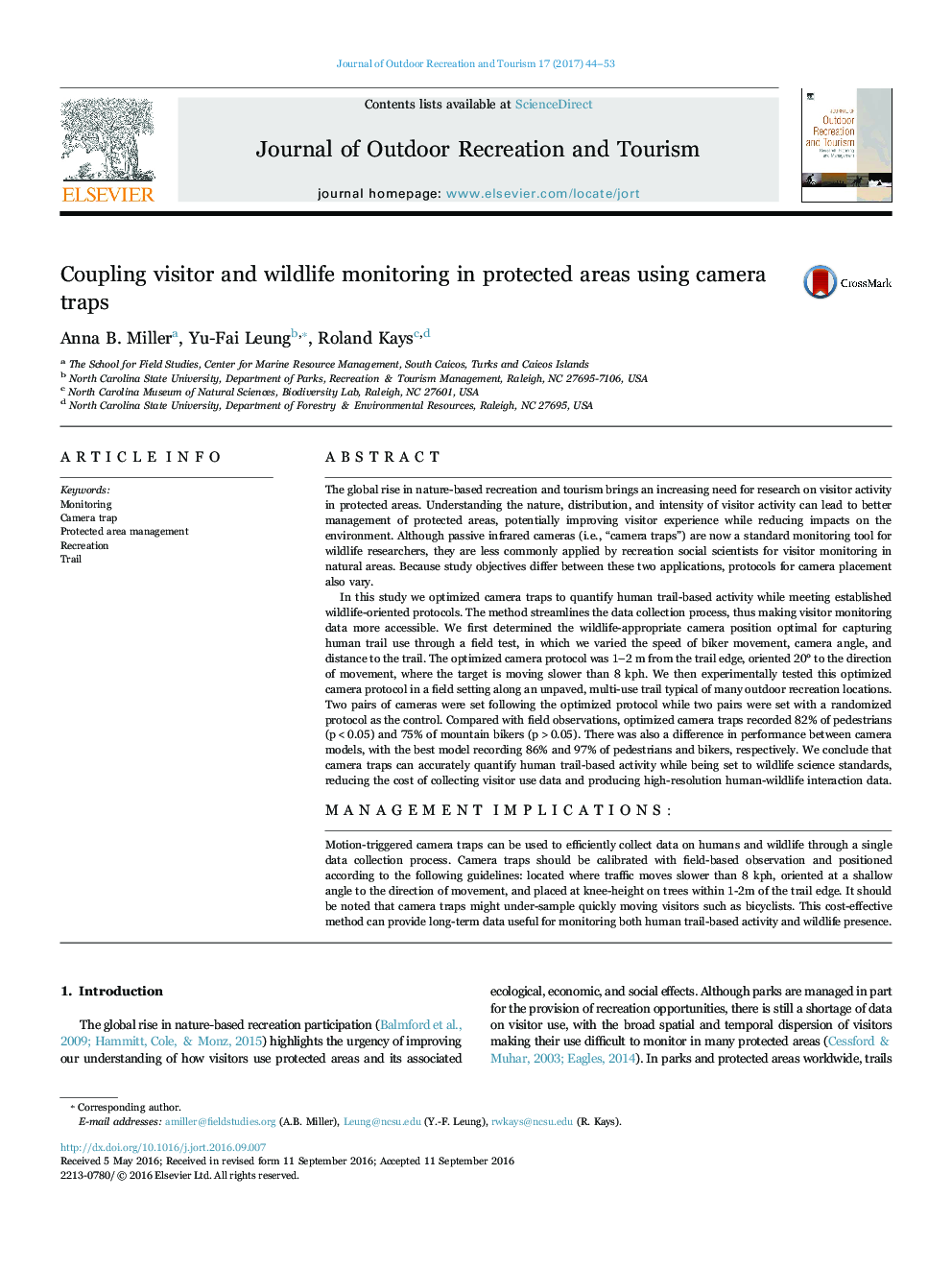| کد مقاله | کد نشریه | سال انتشار | مقاله انگلیسی | نسخه تمام متن |
|---|---|---|---|---|
| 4759880 | 1421754 | 2017 | 10 صفحه PDF | دانلود رایگان |
The global rise in nature-based recreation and tourism brings an increasing need for research on visitor activity in protected areas. Understanding the nature, distribution, and intensity of visitor activity can lead to better management of protected areas, potentially improving visitor experience while reducing impacts on the environment. Although passive infrared cameras (i.e., “camera traps”) are now a standard monitoring tool for wildlife researchers, they are less commonly applied by recreation social scientists for visitor monitoring in natural areas. Because study objectives differ between these two applications, protocols for camera placement also vary.In this study we optimized camera traps to quantify human trail-based activity while meeting established wildlife-oriented protocols. The method streamlines the data collection process, thus making visitor monitoring data more accessible. We first determined the wildlife-appropriate camera position optimal for capturing human trail use through a field test, in which we varied the speed of biker movement, camera angle, and distance to the trail. The optimized camera protocol was 1-2 m from the trail edge, oriented 20° to the direction of movement, where the target is moving slower than 8 kph. We then experimentally tested this optimized camera protocol in a field setting along an unpaved, multi-use trail typical of many outdoor recreation locations. Two pairs of cameras were set following the optimized protocol while two pairs were set with a randomized protocol as the control. Compared with field observations, optimized camera traps recorded 82% of pedestrians (p<0.05) and 75% of mountain bikers (p>0.05). There was also a difference in performance between camera models, with the best model recording 86% and 97% of pedestrians and bikers, respectively. We conclude that camera traps can accurately quantify human trail-based activity while being set to wildlife science standards, reducing the cost of collecting visitor use data and producing high-resolution human-wildlife interaction data.Management ImplicationsMotion-triggered camera traps can be used to efficiently collect data on humans and wildlife through a single data collection process. Camera traps should be calibrated with field-based observation and positioned according to the following guidelines: located where traffic moves slower than 8 kph, oriented at a shallow angle to the direction of movement, and placed at knee-height on trees within 1-2m of the trail edge. It should be noted that camera traps might under-sample quickly moving visitors such as bicyclists. This cost-effective method can provide long-term data useful for monitoring both human trail-based activity and wildlife presence.
Journal: Journal of Outdoor Recreation and Tourism - Volume 17, March 2017, Pages 44-53
